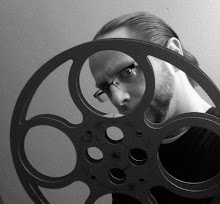This past weekend, Niell Blomkamp’s highly-anticipated
science-fiction film CHAPPIE was released in theatres, finishing No. 1 in the
U.S. Box Office despite earning dismal reviews (read Real Speak’s review HERE).
The film overall seemed to suffer from many bad or odd decisions in casting and
storytelling, with a lot of attention being given to the casting of South
African rap-group Die Antwood.
In the film, Die Antwood members Yolandi Visser and Ninja
(groan) play a pair of low-level thugs out to pull a heist to get themselves
out of debt from a bigger and meaner low-level gangster. Aside from the acting
from the pair being atrocious, the real issue is that no effort was made to
separate the fictional characters from their real-life careers. In fact, every
effort seemed to be made to do just the opposite. The film was front-loaded
with Die Antwood’s music, Yolandi and Ninja wore their band’s merchandise, the
walls of their hideout were slathered with their own promotional posters, and
the fictional characters often listened to their own music in the background. It
was enough to jar you out of the movie and basically became one of the most
blatant and ill-conceived approaches to product placement this Blogger has ever
seen.
Product placement, which is the visual or audio reference to
a product, service, or trademark…has been in the movies for a long, long time.
The film WINGS (1927), which was the first film to win the Academy Award for
Best Picture, contained a plug for Hershey’s Chocolate. The Marx Bros. classic
HORSE FEATHERS (1932) had Marx’s character tossing a Life Savers candy in place
of a life saver, and later, Marx Brother Harpo runs along rooftops in LOVE
HAPPY (1949), which display many billboards. The practice of product placement
was parodied in WAYNE’S WORLD (1992), and here in modern times…director Michael
Bay is famous for sneaking in Victoria’s Secret billboards and ads, while Adam
Sandler is notorious for accepting truckloads of cash from anyone seeking to
display their logo in his films.
Sometimes these deals are made for cash to cover production costs, or done in trade, but can be a huge turnoff for movie viewers.
Seeing a common logo on the big-screen can easily snap a person out of the
movie; after all…people go to the movies to escape from real stuff and be away
from advertising. Filmmakers can argue that the practice brings a sense of
realism into the film, and it’s worth mentioning that any film we see with a
car is automatically guilty of the practice.
What it really comes down to is if the specific product
placement serves the story or the overall movie experience, and in the case of
CHAPPIE, it was a total distraction because there was too much of it. Having
Die Antwood’s music in the soundtrack and the characters wear the merchandise
and listen to their own music practically broke the Fourth Wall (the practice
of the actors speaking to the audience) and was a complete distraction; imagine
John Williams walking aboard the Death Star, wearing a STAR WARS t-shirt and
humming The Imperial March.
Blomkamp made some serious missteps in his handling of Die
Antwood in his film, and we have to hope that future filmmakers will take
CHAPPIE as an example of what not to do. But with so many original indie films
struggling to make it to the big screen, more of this is bound to happen;
hopefully with a lot more finesse and discipline than CHAPPIE had.



No comments:
Post a Comment
A few rules:
1. Personal attacks not tolerated.
2. Haters welcome, if you can justify it.
3. Swearing is goddamn OK.